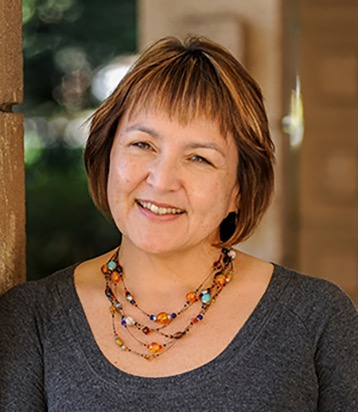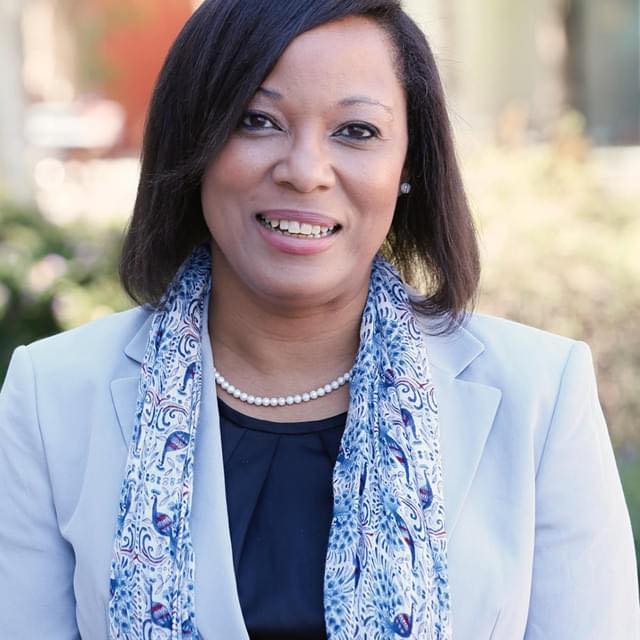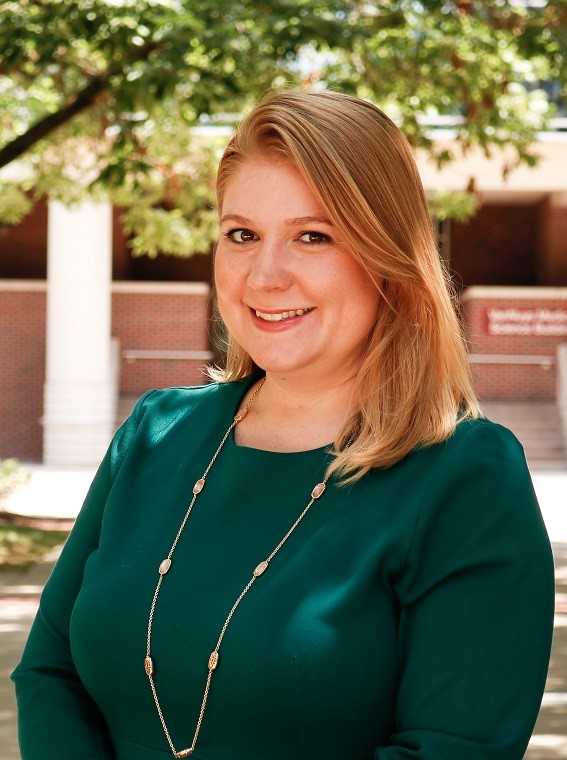|
Welcome to the SoCalCGP Newsletter. The newsletter provides links to this page. Please see below for the items that appeared in the September 2023 issue.
My SoCalCGP Mentor Program Experience
 by Marisa Reyes, Assistant Director of Planned Giving, Harvey Mudd College by Marisa Reyes, Assistant Director of Planned Giving, Harvey Mudd College
The Mentor Program at SoCalCGP is a wonderful opportunity for professional development. Whether you are new to the field or a seasoned planned giving officer, there is always something new to learn in the field of planned giving and having a mentor has helped me stay up-to-date and provide a safety net as I could turn to when I had questions.
Being fairly new to the field, I took advantage of the program in 2019 and was paired with Linda Mazur, Pomona College. She is a leader in the field, and I was honored to be able to ask my questions and seek her guidance. At the time, Harvey Mudd College did not have a director of planned giving and I was managing the day-to-day elements of the existing program. When we first met, I had just finished updating our planned giving Statement of Intent form and was eager to share it with her. She was very complimentary and even wanted to share it with her colleagues. All I could think of was that this Pomona College mentor in planned giving liked our form! We met a few more times (schedules made it difficult) and then the pandemic arrived. I enjoyed our visits and knew that she would always be a resource for me. I valued my mentor/mentee time with Linda and know that her support kept me enthusiastic and engaged in planned giving. We now have a director of planned giving at Harvey Mudd College and our program is growing.
SoCalCGP is an organization filled with opportunities and proud to offer the SoCalCGP Mentor Program as a resource to members. Have you considered sharing your knowledge with others as a mentor? The scope and duration of the mentoring relationship are determined by the mentor and mentee. Interested in the mentee role? Then reach out and make a new friend! There is no cost to you except membership in SoCalCGP and making the time to partner with some great experienced planned giving professionals. SoCalCGP is a network of engaged and caring professionals, and the Mentor Programs is one of the clearest ways to share, learn, and pay it forward!
Dealing With Restricted Gifts: How to Do Right By Both the Past and the Present
 by Karl Mill, Mill Law Center by Karl Mill, Mill Law Center
As charitable giving professionals know well, donors have a tremendous say in how charities spend donated funds. If a donor wants funds to only be used in a certain way, that is how the charity will use them. And it’s not (only) because the charity wants to maintain a good relationship with the donor. The law provides powerful legal protection to donor intent, even long after the donor is gone (and even when the donor didn’t necessarily “know best”).
This law is known as the “charitable trust” doctrine. Under this doctrine, every charity is a trustee with respect to its assets, with a legal obligation to only use them for the charity’s purposes and whatever narrower purposes donors impose. Even if a charity later thinks they have a better use for those funds, they are not legally free to use them in a different way. A charity that violates these restrictions could find themselves on the wrong end of an audit or enforcement action from the California Attorney General and potentially coming out of unrestricted funds to replace any misspent funds).
Of course, it is not just about purpose-restrictions either: the law protects timing restrictions too. Most notably, if a donor makes an “endowed” gift or uses language with the same effect (e.g., “spend only the income”, “maintain the fund permanently”, “do not invade corpus”), the law has very specific requirements for what the charity needs to do to make sure that fund has a permanent duration. For example, the Uniform Prudent Management of Institutional Funds Act (UPMIFA) says that the charity can only spend so much of the fund as is prudent considering various factors, including the goal of permanent duration. Spending seven percent annually is presumptively imprudent, and most charities are in or near the 4-5% range for spending their endowment. And yes, the Attorney General enforces this law too.
As advisors to both the fundraising and operations sides of charities, we see how the law’s empowerment of donors creates tension. On the front end, charities are happy to accept the restrictions imposed by donors because it brings in new assets to support the charity’s mission and existing operations. And no one is upset about the boost to the fundraising report coming from the large but very restricted gift. On the back end, the years go by and the economy takes its twists and turns, and eventually the charity’s personnel are less excited about those restrictions. “What do you mean we can only spend these funds on a program that we don’t want to do anymore?” “What do you mean we can’t dip into this endowed fund as much as we want to solve our emergency funding shortage?” As time moves on and both the donor and fundraiser are gone, we see charities regret the decisions of prior regimes. But the law is indifferent: a charitable trust restriction is forever.
Well…mostly forever. There are some paths for greater flexibility, but they are not always as easy as charities would like. For example, if the donor is still around, they could release the restriction, but their spouse and children do not have that legal power. There are some paths to modifying the restriction (primarily by going to court, but in limited cases through a notice procedure), but they all require a high legal standard to be met first. As always, the best thing you can do is plan ahead and build in that flexibility on day one. But we all know that donors can sometimes be persistent in terms of what they want.
With all that in mind, here are some principles and tips to consider as your charity thinks about its restricted funds:
- Start by Asking “Is it Really Restricted?” Internal allocations and Board restrictions alone do not create legally enforceable restrictions. A “hope” or a “wish” to do something is typically not a requirement. Generally, binding restrictions only come from two places: your charity’s Articles of Incorporation and donors. For example, a Board can always change its mind about choosing to treat unrestricted funds as a “quasi-endowment”.
- Read Your Articles of Incorporation and Ask Your Board to Consider Changing Them If Necessary. Under California law, if your Articles of Incorporation provide a specific purpose (i.e., not just “charitable and educational purposes” but “to do X, Y, and Z specific things in ABC county”), then you can legally only use the money while your Articles said that for those purposes and in that specific way. The law assumes that your donors read the Articles and said “yes, I am only giving for that”, even if your donors never even saw your Articles. It is very common for us to run into organizations that have not looked at their Articles in decades and have evolved into a very different operation, and for us to give them the uncomfortable advice that they are not currently allowed to do any of the things they are doing. Consider avoiding that problem by amending your Articles’ purpose statement to read more broadly (e.g., “to do any charitable or educational activity included in Internal Revenue Code Section 501(c)(3), including but not limited to X, Y, and Z in ABC county”). That change will NOT release the restrictions created by your old Articles, but it will prevent new donations from being inadvertently more restricted than either you or your donors intended.
- Be Careful About Both Gift Agreements and Solicitations. There are two ways that donors can impose restrictions: in the gift instrument (e.g., a will, trust document, gift letter, or grant agreement) or by giving money in response to a solicitation with a specific ask (e.g., if a charity sends letters raising money for a scholarship fund, then it can only use money raised in that campaign for providing scholarships). This means that, in addition to negotiating their gift agreements, charities should be careful in what they say when they raise funds. Review your campaign materials. Is the language very specific about how we will use the funds? Is there anywhere to put a catch-call about other purposes we might use it for if appropriate?
- Endowments Are Forever, Even if Your Charity Is Not. When it comes to the law, the Attorney General charitable purposes are more important than particular charities. The UPMIFA standard does give charities some flexibility to decide how much spending is prudent and there’s some room to consider emergencies, but that flexibility is not unlimited. Some charities may argue “If we do not dip into our endowment, we will not survive.” While that may be compelling emotionally, it may not be legally sufficient to dip into the endowment in the eyes of the California Attorney General. If another charity could carry out the same purposes and maintain the permanent duration of fund, the Attorney General may consider it preferable for that charity to hold and use your endowment, as opposed to your charity violating the endowment restriction. It’s a complicated area of law, but take your endowment restrictions seriously.
- The Best Path Out Is Always the Donor. If a donor is still alive/around, they (and only they) can release or modify the restriction however they want. If you are stuck and this is an option, it’s the easiest path.
- It Takes More Than “Wanting Out” of a Restriction. If your donor is not around, then there may be a legal process – either going to court with a complicated and expensive petition or, for old and small funds (20 years old, < $100k), following an Attorney General notice procedure. But you must show that the restricted purpose is “unlawful, impracticable (i.e., practically impossible, not just impractical), impossible to achieve, or wasteful. These are high standards and, even if satisfied, the modified purpose restriction still needs to be as consistent as possible with the donor’s original restriction. So, your relief is hard to get and may not be as broad as you want it to be. So, your “only use for caring for English bulldogs” fund may be broadened to a “caring for dogs” fund, but it’s not going to be broadened to “cancer research” or “general support.”
- You Don’t Always Have to Say ‘Yes’ to Your Donors. In my experience, charities are not always eager to push back on what their donors want. And, sometimes, that makes sense – if you must accept a restriction to get access to a gift, it’s often worth it. But also give some consideration to the “you” many decades from now or the “you” in a different department of your charity, who is now trying to figure out how to use this narrowly restricted gift you took in. That “you” may be grateful if you do some gentle negotiation to give your charity some flexibility. Maybe a gift agreement provision that the Board can reallocate the purpose or release the endowment restriction without going to court if certain standards are met. Or just tweak that purpose sentence a little in the gift agreement so you are not setting yourself up to go to court when things change. The best way to “untie” your hands in the future is to not tight them so tightly in the first place in the present.
For more information like this, please feel free to check out firm’s blog (www.mill.law/blog) or resources page (www.mill.law/mlc-resources). In addition to charitable giving, we cover topics such as political advocacy, fiscal sponsorship, impact investment, current developments, and general 501(c)(3) compliance.
Membership Team Profile
To kick off our 2023-2024 e-newsletter series, we wanted to introduce you to the team leading our engagement efforts with you. Carí Jackson Lewis and Lizzie Knol serve as leads for the Membership Committee, which includes Jennifer Maqueda, Audra Platz, Maria Solano, and Sandy VandenBerge. This dedicated group of volunteers works to connect with our membership to ensure everyone is getting the most out of their SoCalCGP participation. If you are interested in learning more about membership volunteer opportunities or have questions about your membership, please contact Carí ([email protected]) and Lizzie ([email protected]).
 A bit about Carí: “I joined SoCalCGP when the legendary Kimberly Valentine asked me to Co-Chair with her the annual Western Regional Planned Giving Conference. From there, I have chaired the Inclusion Committee and am currently the co-Chair of the Membership Committee with Lizzie. I LOVE SoCalCGP! While the volunteer board service and educational opportunities are stellar, the thing I love most about this group are the people. Our membership comprises some of the most friendly, knowledgeable, and generous gift planning professionals that I have ever had the fortune with whom to volunteer, work, and play. They are simply some of the best and funniest colleagues in the field! I am thrilled to work with Lizzie to achieve the Membership Committee's mission of reengaging past members, welcoming new members, and becoming an even more supportive, diverse, equitable and inclusive community! Join us!" A bit about Carí: “I joined SoCalCGP when the legendary Kimberly Valentine asked me to Co-Chair with her the annual Western Regional Planned Giving Conference. From there, I have chaired the Inclusion Committee and am currently the co-Chair of the Membership Committee with Lizzie. I LOVE SoCalCGP! While the volunteer board service and educational opportunities are stellar, the thing I love most about this group are the people. Our membership comprises some of the most friendly, knowledgeable, and generous gift planning professionals that I have ever had the fortune with whom to volunteer, work, and play. They are simply some of the best and funniest colleagues in the field! I am thrilled to work with Lizzie to achieve the Membership Committee's mission of reengaging past members, welcoming new members, and becoming an even more supportive, diverse, equitable and inclusive community! Join us!"
 A bit about Lizzie: “I joined Caltech’s Office of Gift Planning and the Southern California planned giving community in July 2022. Coming back to my native Los Angeles, I was most recently the Senior Associate Director of Development for the IU Simon Comprehensive Cancer Center. Joining the SoCalCGP board and the Membership Committee has been a wonderful way to get to know my new community and colleagues, and I am looking forward to the year ahead and making more new connections with our members.” A bit about Lizzie: “I joined Caltech’s Office of Gift Planning and the Southern California planned giving community in July 2022. Coming back to my native Los Angeles, I was most recently the Senior Associate Director of Development for the IU Simon Comprehensive Cancer Center. Joining the SoCalCGP board and the Membership Committee has been a wonderful way to get to know my new community and colleagues, and I am looking forward to the year ahead and making more new connections with our members.”
|

 by Marisa Reyes, Assistant Director of Planned Giving, Harvey Mudd College
by Marisa Reyes, Assistant Director of Planned Giving, Harvey Mudd College by Karl Mill,
by Karl Mill,  A bit about Carí: “I joined SoCalCGP when the legendary Kimberly Valentine asked me to Co-Chair with her the annual Western Regional Planned Giving Conference. From there, I have chaired the Inclusion Committee and am currently the co-Chair of the Membership Committee with Lizzie. I LOVE SoCalCGP! While the volunteer board service and educational opportunities are stellar, the thing I love most about this group are the people. Our membership comprises some of the most friendly, knowledgeable, and generous gift planning professionals that I have ever had the fortune with whom to volunteer, work, and play. They are simply some of the best and funniest colleagues in the field! I am thrilled to work with Lizzie to achieve the Membership Committee's mission of reengaging past members, welcoming new members, and becoming an even more supportive, diverse, equitable and inclusive community! Join us!"
A bit about Carí: “I joined SoCalCGP when the legendary Kimberly Valentine asked me to Co-Chair with her the annual Western Regional Planned Giving Conference. From there, I have chaired the Inclusion Committee and am currently the co-Chair of the Membership Committee with Lizzie. I LOVE SoCalCGP! While the volunteer board service and educational opportunities are stellar, the thing I love most about this group are the people. Our membership comprises some of the most friendly, knowledgeable, and generous gift planning professionals that I have ever had the fortune with whom to volunteer, work, and play. They are simply some of the best and funniest colleagues in the field! I am thrilled to work with Lizzie to achieve the Membership Committee's mission of reengaging past members, welcoming new members, and becoming an even more supportive, diverse, equitable and inclusive community! Join us!" A bit about Lizzie: “I joined Caltech’s Office of Gift Planning and the Southern California planned giving community in July 2022. Coming back to my native Los Angeles, I was most recently the Senior Associate Director of Development for the IU Simon Comprehensive Cancer Center. Joining the SoCalCGP board and the Membership Committee has been a wonderful way to get to know my new community and colleagues, and I am looking forward to the year ahead and making more new connections with our members.”
A bit about Lizzie: “I joined Caltech’s Office of Gift Planning and the Southern California planned giving community in July 2022. Coming back to my native Los Angeles, I was most recently the Senior Associate Director of Development for the IU Simon Comprehensive Cancer Center. Joining the SoCalCGP board and the Membership Committee has been a wonderful way to get to know my new community and colleagues, and I am looking forward to the year ahead and making more new connections with our members.”